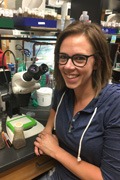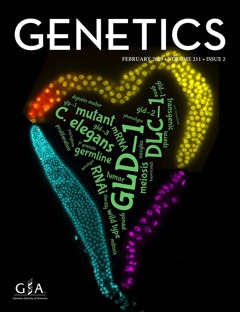Genetics Learning Framework
Realizing the need for a learning framework for educators to use in developing undergraduate classes, the GSA Education Committee created a list of vetted core concepts and competencies. These core competencies represent the knowledge that an undergraduate should acquire while taking an introductory genetics course. Below you will find a catalog of sample learning objectives, which offer educators a reliable and effective starting point to create enriching coursework for their students. We also encourage educators to customize and supplement the objectives as needed.
GSA PREP original resources and CourseSource genetics resources are presented using this genetics learning framework.
Core Concepts and Competencies in Genetics
Revised and approved by the Genetics Society of America Education Committee in November 2015.
|
Category |
Core Concept
|
|
Nature of Genetic Material |
How is DNA organized?
|
|
Nature of Genetic Material |
What are the molecular components and mechanisms necessary to preserve and duplicate an organism’s genome?
|
|
Transmission/ Patterns of Inheritance |
What are the mechanisms by which an organism’s genome is passed on to the next generation?
|
|
Transmission/ Patterns of Inheritance |
How can one deduce information about genes, alleles, and gene functions from analysis of genetic crosses and patterns of inheritance?
|
|
Transmission/ Patterns of Inheritance |
How does the phenomenon of linkage affect the assortment of alleles during meiosis?
|
|
Molecular Biology of Gene Function
|
How is genetic information expressed so it affects an organism’s structure and function?
|
|
Gene Expression & Regulation |
How can gene activity be altered in the absence of DNA changes?
|
|
Gene Expression & Regulation |
How do genes and genomes control changes in an organism’s structure and function throughout its life cycle?
|
|
Genetic Variation |
How do different types of mutations affect genes and the corresponding mRNAs and proteins?
|
|
Evolution & Population Genetics |
What are the processes that can affect the frequency of genotypes and phenotypes in a population over time?
|
|
Genetics of Model Organisms |
How do the results of molecular genetic studies in model organisms help us understand aspects of human genetics and genetic diseases?
|
|
Methods & Tools in Genetics |
What experimental methods are commonly used to analyze gene structure, gene expression, gene function, and genetic variants?
|
Core Competencies
Additionally, all GSA PREP and related resources promote proficiency in at least one core competency listed below (see Vision and Change).
Students should be able to:
- Locate, read, and comprehend primary literature research papers on genetics topics;
- Implement observational strategies to formulate a question;
- Generate testable hypotheses;
- Design an experiment using appropriate controls and appropriate sample sizes;
- Gather and evaluate experimental evidence, including qualitative and quantitative data;
- Apply statistical methods when analyzing their data, and use patterns to construct a model;
- Generate and interpret graphs displaying experimental results;
- Critique large data sets and use bioinformatics to assess genetics data;
- Communicate experimental results effectively, including writing research papers and giving presentations;
- Effectively explain genetics concepts to different audiences;
- Tap into the interdisciplinary nature of science;
- Identify and critique scientific issues relating to society or ethics.



